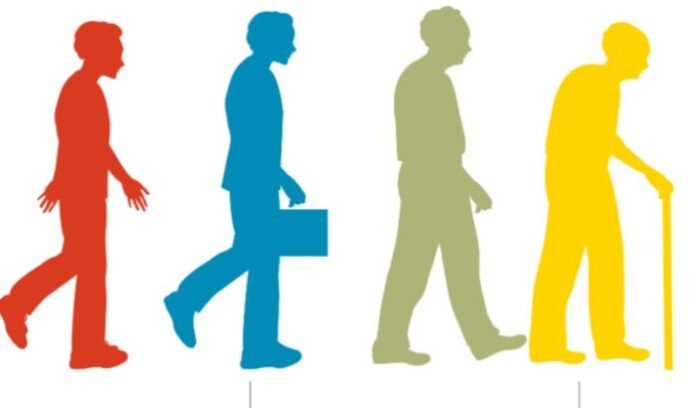Statistics regarding credit usage in the U.S. or around the world often consider the “average” person — how many credit cards they have, how much debt they carry, and how long it takes them to pay off those balances.
While this approach captures a certain snapshot of credit usage, it’s even more informative to break down financial behavior by generation for an even more in-depth perspective. People in different life stages tend to spend and save money differently — and it’s helpful to understand how people of all ages are currently utilizing credit. This is especially true, since different age groups have different priorities and needs.
Let’s take a closer look at credit usage by age, including consumers from Gen Z, Millennial, Gen X, and Boomer generations.
Gen Z Credit Insights
A recent TransUnion study reported by CNBC considered 33 million “credit active” Gen Z consumers (aged 18 to 24) around the world who have used at least one lending product.
The most popular types of debt for this age group included:
- Credit card (50 percent)
- Student loans (39 percent)
- Auto loan (25 percent)
- Unsecured personal loan (4 percent)
As for the U.S. specifically, half of Gen Z respondents had an average of 1.5 credit cards. The median balance was $606, and the average utilization rate was about 31 percent. It is interesting that credit cards are very popular in this age range, for a few different reasons, one of them is the convenience of having money with you without carrying any cash. Another reason for the popularity of credit cards is online services. Gen Z is highly oriented towards the interned and will use online payment and services a lot in their regular, day to day life. Credit cards for them serve as a sort of wallet with money just one click away.
Interestingly enough, half of credit-active Gen Z consumers are considered “prime” borrowers with a VantageScore credit rating of 661 or higher. This is significantly higher than the 39 percent of Millennials who had a prime score at this same age.
Millennial Credit Insights

The general trajectory of debt on the credit card for Millennials (aged 24 to 38) is rising faster than other generations, increasing 7 percent in the year 2019, as claimed by data obtained from Experian. Millennials that are residents of the U.S. had $4,712 in debt solely on the credit cards, which is not as high as the average, but still a figure on the rise. The quantity of debt carried by Millennials varies greatly by their age. Those at the younger end of the spectrum carried closer to $2,300, while the oldest in this age group have balance in an average of $6,675 for the same time period. This is a very expected growth considering that around this age, they have permanent jobs and start with saving money. As well as they grow older, they prosper and obtain a higher and better-payed position in the companies they work in, hence the increase in the average balance.
And, of course, Millennials have been notoriously plagued with student loan debt compared to previous generations. As of late 2018, members of this age group had an average of $34,770 in education-related debt. The amount of debt in student loans is incredible, and most people of this group are looking into paying this loan as fast as possible. So, even though the balance of their account is higher than in Gen Z, some may still struggle due to high installments of student loans.
Millennials feeling particularly crunched by debt may need help getting a handle on it. It’s worth exploring potential solutions like debt consolidation, debt management, or debt settlement. As Freedom Debt Relief reviews outline, while federal student debt is generally not a candidate for debt relief solutions, private student loans may be eligible.
Gen X Credit Insights

Gen Xers in America (aged 39 to 54) carry the most debt of any generation. The total average outstanding debt for members of Gen X reached $136,869 in 2019 — a 10-percent increase within three years across all major debt categories.
Here’s the detailed breakdown on Gen X debt distribution:
- Personal loans: 5.7 percent
- Credit cards: 8.6 percent
- Auto loans: 13 percent
- Student loans: 10.7 percent
- Mortgage: 62 percent
Considering the age range of Gen Xers, it makes sense their biggest obligations would be for housing and transportation — though it’s worth noting credit card usage and student loans are on the rise for this generation. This age group is, in most cases, trapped their budget by paying off their house or car or both. This actually makes sense, since once they have paid for their student loans, accommodation comes next. Especially since most of them will at this age, have families and kids. Some will still carry on in paying their student loans, and this can be very overwhelming for the house budget.
Boomer Credit Insights

Although Baby Boomers (aged 55 to 73) are working longer, many are on the precipice of retirement — meaning credit usage is very important, as it can make or break the quality of life and financial security.
The average boomer had $6,788 in credit card debt at the start of 2019, which actually represents the lowest figure for this age group in the last seven years. Boomers that are younger tended to carry very high debt in credit cards ($8,113) while the Boomers that were the oldest carried less ($5,337).
The data for this age group is the lowest compared to the others, but still devastating, since they have been working for their whole lives, and they still have some loans to pay for. In most cases, these are mortgages, but nevertheless, the amount of credit debt for this age group is significant. There are ways they can lower down the numbers, but in reality, this can be very hard to achieve without any additional help.
It’s interesting to consider credit usage by age — not only do the average balances shift by generation, but credit distribution tends to as well.
Conclusion
There are significant differences between generations as we would expect them to be. The youngest age group has the most part of the credit cards, and as there is an increase in age, we can see the decrease in the cards. Reverse trends are seen in student loans and mortgages, with boomers having the lowest ratio in all credit categories, but still, a significant number of them will have a significant amount of debt on their hands. We can also see that as the generations mature, the priorities change, and with them the credit stability, amount of the credit, and the type change in accordance with maturation and lifestyles.










